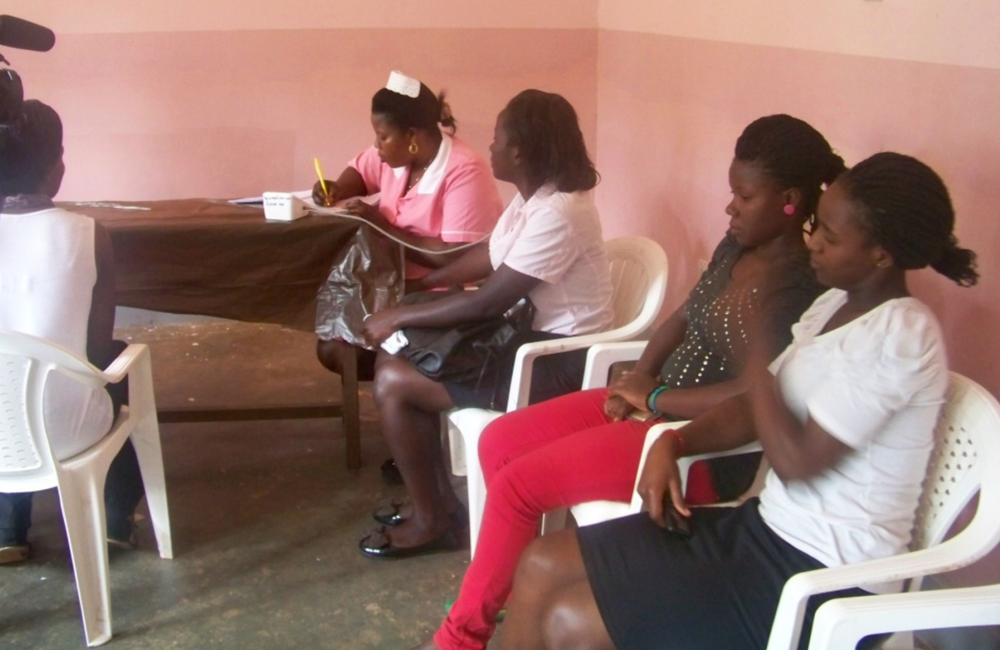
Cancers not related to HIV or infections are becoming more common in people with HIV in South Africa as they live longer, according to a study of 5.2 million people published in the journal Clinical Infectious Diseases.
The study found that breast cancer was the third most common cancer diagnosed in people with HIV in South Africa, behind two AIDS-defining cancers (cervical cancer and Kaposi’s sarcoma).
The rise in cancers without an infectious cause will require innovations in cancer screening and improvements in treatment in South Africa and other nations with a high prevalence of HIV as people with HIV live longer, say the study investigators.
Globally, patterns of cancer diagnoses are changing as people with HIV live longer.
Until the 2000s, the majority of cancers diagnosed in people with HIV in higher-income countries were AIDS-defining cancers such as Kaposi sarcoma, non-Hodgkin lymphoma or cervical cancer, or cancers caused by infections, such as liver cancer.
In the United States, the incidence of AIDS-defining cancers in people with HIV began to decline between 2000 and 2012, the US HIV/AIDS Cancer Match study reported in 2018. If trends established in that period continued beyond 2012, the study investigators expected prostate cancer to become the most frequently diagnosed cancer in people with HIV in the United States by 2030, due to the ageing of people with HIV.
The current and anticipated burden of cancer among people with HIV in sub-Saharan Africa is unclear. In particular, there is a lack of information about the relationship between age and cancer incidence.
Knowing which cancers occur more often in older people with HIV is important for planning services and cancer prevention programmes.
Using data from South Africa’s National Cancer Registry and anonymised HIV data from South Africa’s National Health Laboratory Service, Yann Ruffieux of the University of Bern and colleagues in Switzerland and South Africa investigated the impact of age on cancer incidence in more than five million people with HIV in South Africa.
The study population consisted of 5,222,827 people with HIV who had undergone at least one laboratory test. The time from the first HIV-related laboratory test registered after 2004 (either antibody or CD4 count) was used as the beginning of the follow-up period. Sixty-nine percent were female and study participants were followed for a median of 2.4 years in the period between 2004 and 2014. The median age of participants when they entered study follow-up was 33 years. The median CD4 cell count was 286.
A total of 29,580 participants developed cancer. Of these, 19,749 were infection-related cancers and 8,764 were cancers not linked to infections.
"Improving the capacity to treat cancer successfully will require major investments and political will."
Cervical cancer was the most common cancer diagnosed among participants (n=7,418), followed by Kaposi sarcoma (n= 6,380) and breast cancer (n=2,748).
Overall, infection-related cancers were diagnosed at a younger age than infection-unrelated cancers (39.2 years vs 47.4 years). Cancers linked with Epstein-Barr virus (Hodgkin lymphoma, Burkitt’s lymphoma) and Kaposi sarcoma were diagnosed at a median age of 35 years, non-Hodgkin lymphoma at a median age of 38 years, and cancers linked to human papillomavirus (HPV) at a median age of 40.
In contrast, the only infection-unrelated cancer diagnosed at a median age below 40 was leukaemia (36 years). The most common cancer not related to an infection, breast cancer, was diagnosed at a median age of 44 years. Lung cancer (n= 734 cases) was diagnosed at a median age of 52 years and colorectal cancer (n=655) at a median age of 48 years. Prostate cancer (n=652), the most common non-AIDS cancer in men, was diagnosed at a median age of 59 years.
The rates of infection-unrelated cancers began to rise steeply after the age of 40 in both men and women, but the incidence rate of infection-unrelated cancers didn’t overtake the incidence rate of infection-related cancers until the age of 55 in men. In women, the rate of infection-related cancers remained higher than infection-unrelated cancers at all ages.
Some infection-related cancers occurred at younger ages in people with low CD4 counts (below 200). The incidence of non-Hodgkin lymphoma peaked at the age of 40-45 years in people with CD4 counts below 200, whereas the incidence rose with age in those with CD4 counts above 200. The incidence of Kaposi sarcoma and conjunctival cancers (cancers of the eye) also peaked at the age of 40 in people with CD4 counts below 200.
The study investigators say that as wider availability of antiretroviral therapy in South Africa prolongs life and leads to a growth in the number of older people with HIV, prevention and detection of infection-unrelated cancers will become increasingly important.
Cancer prevention among people with HIV in South Africa should focus on smoking cessation, avoidance of excessive exposure to the sun and promotion of healthy lifestyles, they say, as well as HPV and hepatitis B vaccination and screening and early treatment of pre-cancerous cervical lesions.
In a recent commentary article in The Oncologist, Alfred Nuegut and Wafaa El-Sadr of Columbia University, New York, and Raul Ruff of University of the Witwatersrand, Johannesburg, explored the challenges for cancer prevention and treatment in sub-Saharan Africa.
They note that tobacco use is rising in sub-Saharan Africa as tobacco companies attempt to replace declining sales in high-income markets by targeting African markets. Tobacco use increases the risk of several cancers, of which lung cancer is the most common.
Urbanisation has led to changes in diet, increased calorie intake and sedentary lifestyles. Obesity and a diet with a low level of plant-based foods each raise the risk of colorectal cancer. Obesity also raises the risk of 12 other cancers, including breast, kidney and stomach cancer.
Age-based screening programmes have played an important role in improving the outcomes of some cancers in high-income settings by catching cancers earlier. However, apart from cervical cancer, there is no systematic screening for common cancers in African countries.
Services for the diagnosis and treatment of cancer are also poorly resourced in sub-Saharan Africa, they note. The lack of trained personnel, specialist pathology services, radiotherapy services and affordable chemotherapy drugs contribute to sub-optimal cancer outcomes. Palliative care, hospice care and social support are also underdeveloped. Improving the capacity to treat cancer successfully will require major investments and political will, say the authors.
Ruffieux Y et al. Age and cancer incidence in 5.2 million people with HIV: the South African HIV Cancer Match study. Clinical Infectious Diseases, published online 3 December 2022.
https://doi.org/10.1093/cid/ciac925
Neugut AI, El-Sadr WM, Ruff P. The looming threat: cancer in sub-Saharan Africa. The Oncologist, 26: e2099-2101, 2021.
https://doi.org/10.1002/onco.13963
Full image credit: Students queue up for tests before accessing the Cervical Cancer Screening service. Image by CEHURD CEHURD. Available at www.flickr.com/photos/125285819@N05/15161780820 under a Creative Commons licence CC BY 2.0.
Update: This article was amended on 23 January 2023 to remove a statement about changes in incidence over time, which the study did not have information on.

